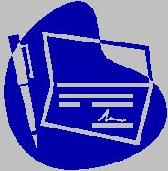
 |
|
| Financial Terms | |
| Enterprise resource planning system |
|
Information about financial, finance, business, accounting, payroll, inventory, investment, money, inventory control, stock trading, financial advisor, tax advisor, credit.
Main Page: credit, inventory, inventory control, stock trading, tax advisor, financial advisor, payroll, business, |
Definition of Enterprise resource planning system
Enterprise resource planning systemA computer system used to manage all company
Related Terms:enterprise resource planning (ERP) systema packaged software program that allows a company to Accelerated cost recovery system (ACRS)Schedule of depreciation rates allowed for tax purposes. Clearing House Automated Payments System (CHAPS)A computerized clearing system for sterling funds Clearing House Interbank Payments System (CHIPS)An international wire transfer system for high-value Corporate financial planningFinancial planning conducted by a firm that encompasses preparation of both Dupont system of financial controlHighlights the fact that return on assets (ROA) can be expressed in terms European Monetary System (EMS)An exchange arrangement formed in 1979 that involves the currencies  Federal Reserve SystemThe central bank of the U.S., established in 1913, and governed by the Federal Financial planningThe process of evaluating the investing and financing options available to a firm. It Floor planningArrangement used to finance inventory. A finance company buys the inventory, which is then Government sponsored enterprisesPrivately owned, publicly chartered entities, such as the Student Loan Imputation tax systemArrangement by which investors who receive a dividend also receive a tax credit for Just-in-time inventory systemssystems that schedule materials/inventory to arrive exactly as they are Materials requirement planningComputer-based systems that plan backward from the production schedule Multirule systemA technical trading strategy that combines mechanical rules, such as the CRISMA Nonsystematic riskNonmarket or firm-specific risk factors that can be eliminated by diversification. Also  Planning horizonThe length of time a model projects into the future. Progressive tax systemA tax system wherein the average tax rate increases for some increases in income but Split-rate tax systemA tax system that taxes retained earnings at a higher rate than earnings that are SystematicCommon to all businesses. Systematic riskAlso called undiversifiable risk or market risk, the minimum level of risk that can be Systematic risk principleOnly the systematic portion of risk matters in large, well-diversified portfolios. Two-tier tax systemA method of taxation in which the income going to shareholders is taxed twice. Unsystematic riskAlso called the diversifiable risk or residual risk. The risk that is unique to a company MACRS (Modified Accelerated Cost Recovery System)A depreciation method created by the IRS under the Tax Reform Act of 1986. Companies must use it to depreciate all plant and equipment assets installed after December 31, 1986 (for tax purposes). Accounting systemA set of accounts that summarize the transactions of a business that have been recorded on source documents. Planning, programming and budgeting system (PPBS)A method of budgeting in which budgets are allocated to projects or programmes rather than to responsibility centres.  Periodic inventory systemAn inventory system in which the balance in the Inventory account is adjusted for the units sold only at the end of the period. Perpetual inventory systemAn inventory system in which the balance in the Inventory account is adjusted for the units sold each time a sale is made. Systematic RiskThe amount of total risk that cannot be eliminated by portfolio Unsystematic RiskThe amount of total risk that can be eliminated by diversification by actual cost systema valuation method that uses actual direct business intelligence (BI) systema formal process for gathering and analyzing information and producing intelligence to meet decision making needs; requires information about charge-back systema system using transfer prices; see transfer cost control systema logical structure of formal and/or informal cost management system (CMS)a set of formal methods flexible manufacturing system (FMS)a production system in which a single factory manufactures numerous variations hybrid costing systema costing system combining characteristics job order costing systema system of product costing used just-in-time manufacturing systema production system that attempts to acquire components and produce inventory only as needed, to minimize product defects, and to management control system (MCS)an information system that helps managers gather information about actual organizational occurrences, make comparisons against plans, management information system (MIS)a structure of interrelated elements that collects, organizes, and communicates manufacturing resource planning (MRP II)a fully integrated materials requirement planning system that involves materials requirements planning (MRP)a computerbased information system that simulates the ordering and normal cost systema valuation method that uses actual performance management systema system reflecting the entire package of decisions regarding performance measurement and evaluation planningthe process of creating the goals and objectives for process costing systema method of accumulating and assigning costs to units of production in companies producing large quantities of homogeneous products; pull systema production system dictated by product sales push systemthe traditional production system in which red-line systeman inventory ordering system in which a red responsibility accounting systeman accounting information system for successively higher-level managers about the performance of segments or subunits under the control scarce resourcea resource that is essential to production standard cost systema valuation method that uses predetermined strategic planningthe process of developing a statement of strategic resource managementorganizational planning for the deployment of resources to create value for customers and shareholders; key varibles in the process include the management of information and the management of change in response to threats and opportunities tactical planningthe process of determining the specific two-bin systeman inventory ordering system in which two Manufacturing resource planning (MRP II)An expansion of the material requirements planning concept, with additional computer-based capabilities in the areas of Material requirements planning (MRP)A computer-driven production methodology Du Pont systemA breakdown of ROE and ROA into component ratios. lock-box systemsystem whereby customers send payments to a post office box and a local bank collects and processes checks. Modified Accelerated Cost Recovery System (MACRS)Depreciation method that allows higher tax deductions in early years and lower deductions later. planning horizonTime horizon for a financial plan. Federal Reserve SystemThe central banking authority responsible for monetary policy in the United States. Price SystemSee market mechanism. Electronic Federal Tax Payment Systems (EFTPS)An electronic funds transfer system used by businesses to remit taxes to the government. Aggregate planningA budgeting process using summary-level information to Automated storage/retrieval systemA racking system using automated systems Manufacturing resource planningAn integrated, computerized system for planning Material requirements planningA computerized system used to calculate material Pull systemA materials flow concept in which parts are only withdrawn after a Push systemA materials flow concept in which parts are issued based on planned Two-bin systemA system in which parts are reordered when their supply in one Visual review systemInventory reordering based on a visual inspection of on-hand Overdraft Systemsystem whereby a depositor may write cheques in excess of the balance, with the bank automatically extending a loan to cover the shortage. Interac systemCanada's bank machine and electronic debit system. If you use your bank card at a bank machine which displays the Interac symbol (and that bank machine is not your bank's machine), you will be charged a fee. PLUS systemA bank machine network outside Canada, across the U.S. and internationally. Customers who use a bank machine with a 'PLUS' symbol may be charged a fee. systematic withdrawal planPlans offered by mutual fund companies that allow unitholders to receive payment from their investment at regular intervals. Estate PlanningAn insurance program designed to provide funds for insured's dependents upon death of the insured, and to also conserve, as much as possible, the personal assets that the insured wants to bequeath to heirs. Related to : financial, finance, business, accounting, payroll, inventory, investment, money, inventory control, stock trading, financial advisor, tax advisor, credit. |